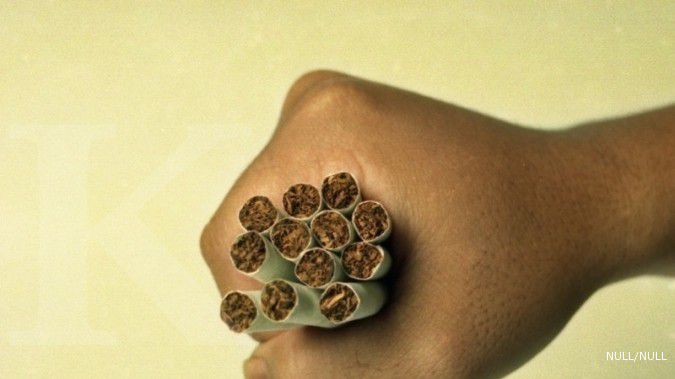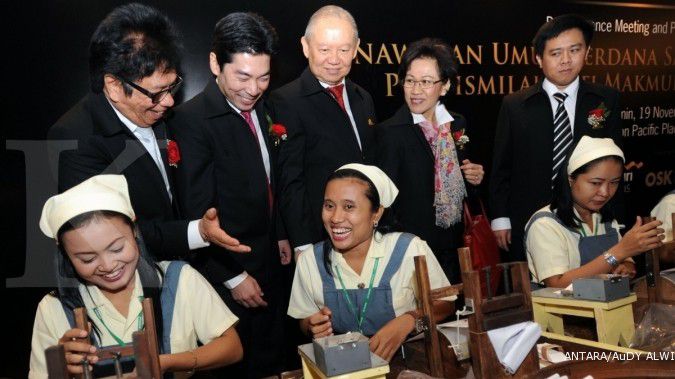JAKARTA. Cigarette makers are fretting over a possible spike in costs, which have increased steadily in recent years following increased government revenue targets and health campaigns aimed at the one-third of the country’s population that consumes cigarettes.
In the revised 2015 budget, the government aims to pocket Rp 145.7 trillion (US$11.2 billion) this year from excise tax, 20.9 percent higher than its initial target of around Rp 120.5 trillion.
The government previously raised excise for tobacco-related products by an average of 8.7 percent as of Jan. 1, 2015, and concerns have emerged among industry players that the charges will be raised again to meet the higher revenue target.
“Increasing excise tax on cigarettes twice a year will just harm the [tobacco] industry,” said Muhaimin Moefti, the chairman of the Indonesian Light Cigarette Producers Association (Gaprindo).
Based on data from the Indonesian Cigarette Producers Association (Gappri), the number of cigarette factories in the country has declined from as many as 4,900 in 2009 to around 600 at present, with many unable to survive the excise hikes and fierce competition.
For a number of cigarette manufacturers, excise tax is the largest contributor to the cost of goods sold, according to the companies’ financial reports.
Excise tax — along with valued-added tax and cigarette tax — makes up around two-thirds of cost of sales for publicly listed PT Gudang Garam, PT HM Sampoerna and PT Bentoel International Investama, respectively, during the first three months of this year.
The association has also pointed out that the cigarette industry has seen its excise tax rise by 16 percent on average over the last five years.
Sampoerna, which controls 35 percent of the country’s cigarette market, paid over Rp 52 trillion in excise tax, value-added tax and revenue tax in 2014, according to the firm’s internal data.
In the revised 2015 state budget brief, the government declared its intention to increase tax revenue through a number of methods, including by netting more eligible tax payers, intensifying regulations and adjusting tariffs including excise.
However, it remains unclear which method the government will impose to raise revenues from excise.
The government has struggled to impart awareness of the hazardous impacts of smoking to the country’s tens of millions of smokers. Pictorial warnings on cigarette packets are now mandatory, but consumption has yet to decline noticeable, with cigarettes remaining Indonesia’s second-most consumed product after rice.
However, the excise tax hikes have put pressure on producers’ finances. During the January-March period this year, most cigarette-makers booked lower net profits than the same period last year.
Gudang Garam registered Rp 1.3 trillion in net profits in the first quarter of this year, down 7.1 percent from Rp 1.4 trillion the same period last year, while fellow cigarette-maker PT Wismilak Inti Makmur saw its net profit decline by 7.5 percent year-on-year to Rp 33.4 billion from Rp 36.1 billion.
Yet despite the tax burden, analysts have argued that this year will nonetheless be favorable for the industry.
Stevanus Juanda, an analyst with UOB Kay Hian, said that Gudang Garam was likely to enjoy growth in its new variants of machine-made clove cigarettes and benefit from lower plastic prices in line with low oil prices.
A recent Credit Suisse study revealed that cigarette consumption in Indonesia was relatively stable.
The study, which was conducted in September last year among 15,835 respondents in a number of countries, including Indonesia, indicated that 34 percent of respondents planned to consume more cigarettes in the next three months, up from 26 percent in a previous similar study.
Around 35 percent of Indonesia’s 249 million people are smokers, according to data from the American Cancer Society. (Khoirul Amin)
/2015/02/24/1268064906p.jpg)













